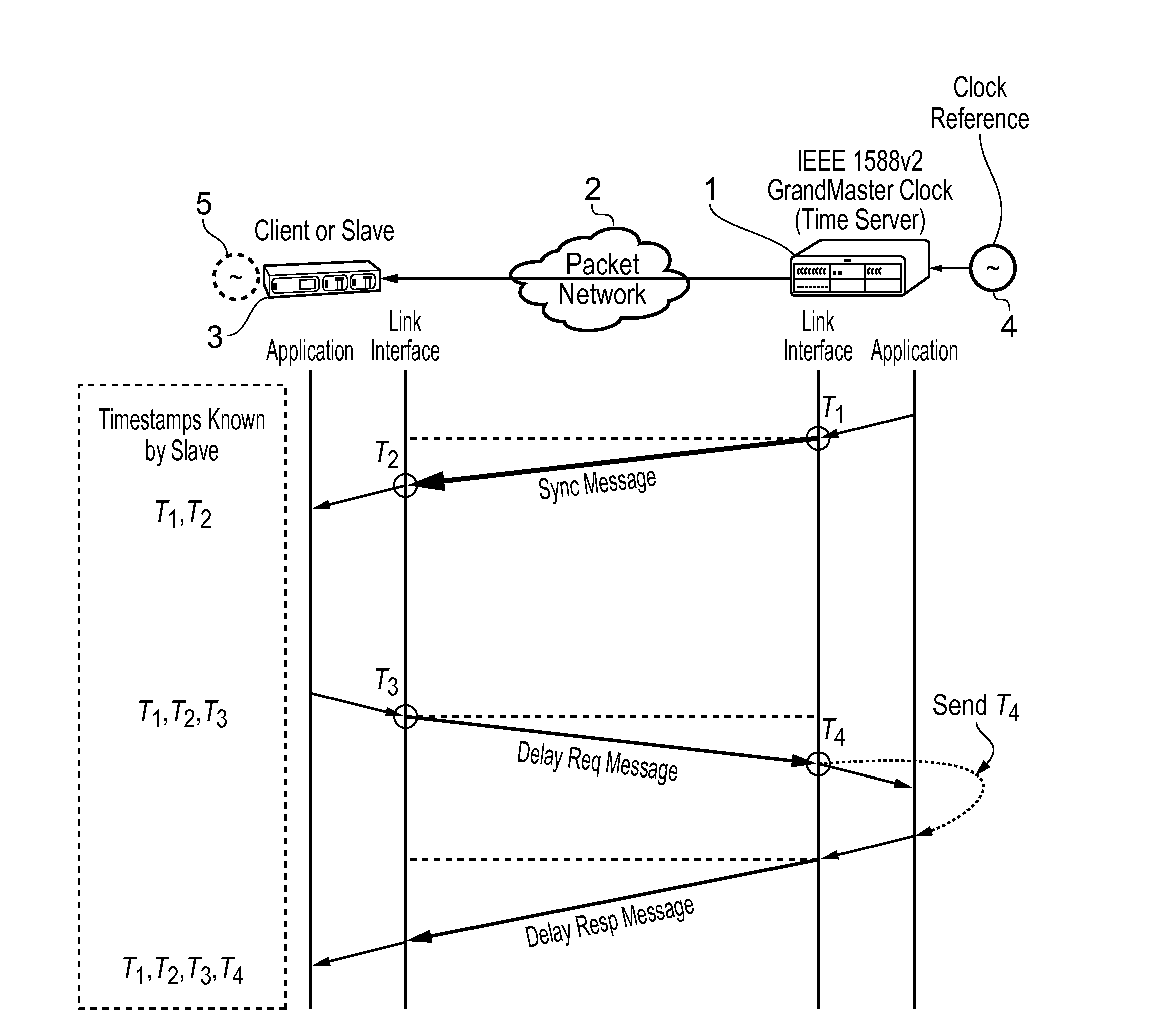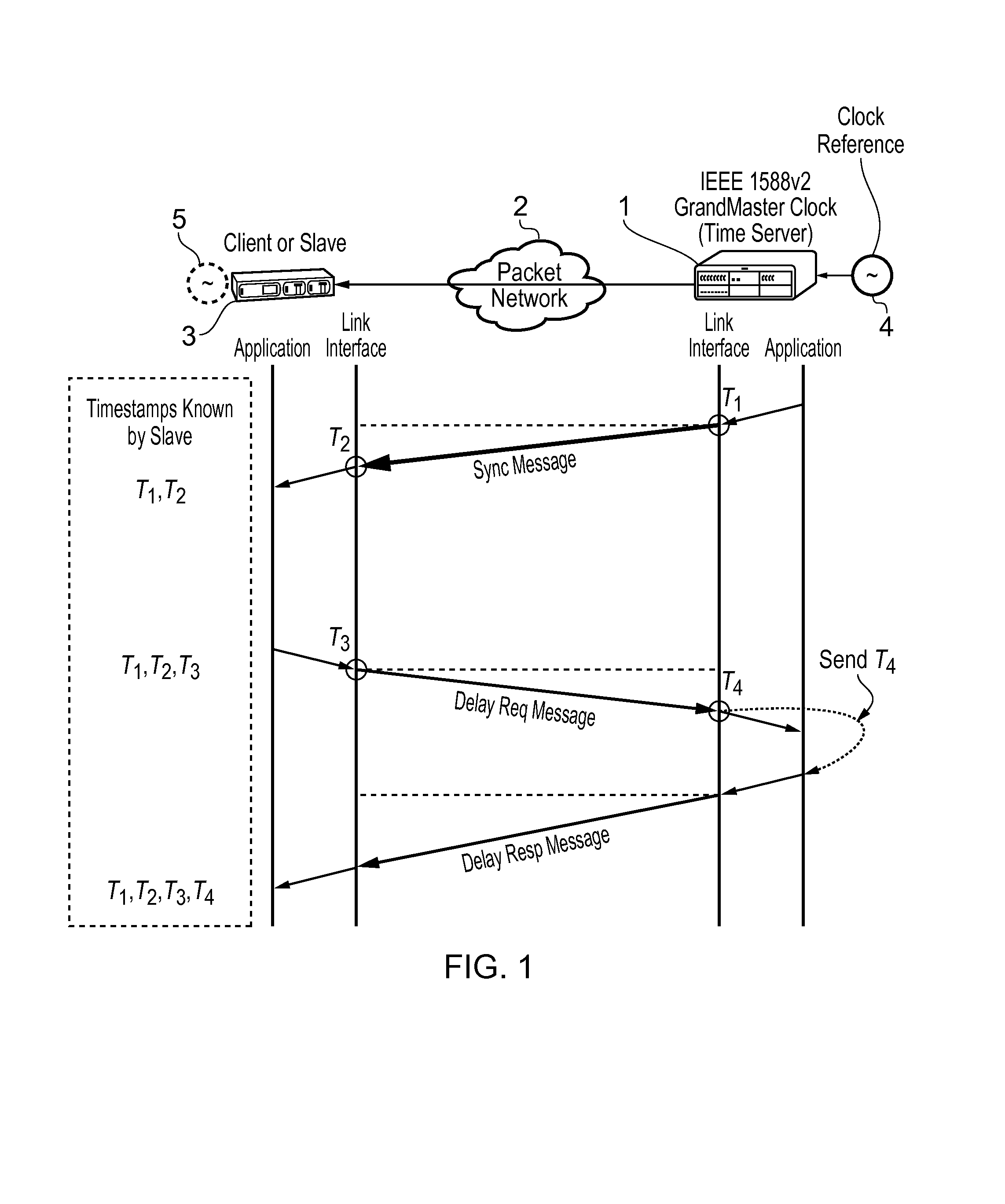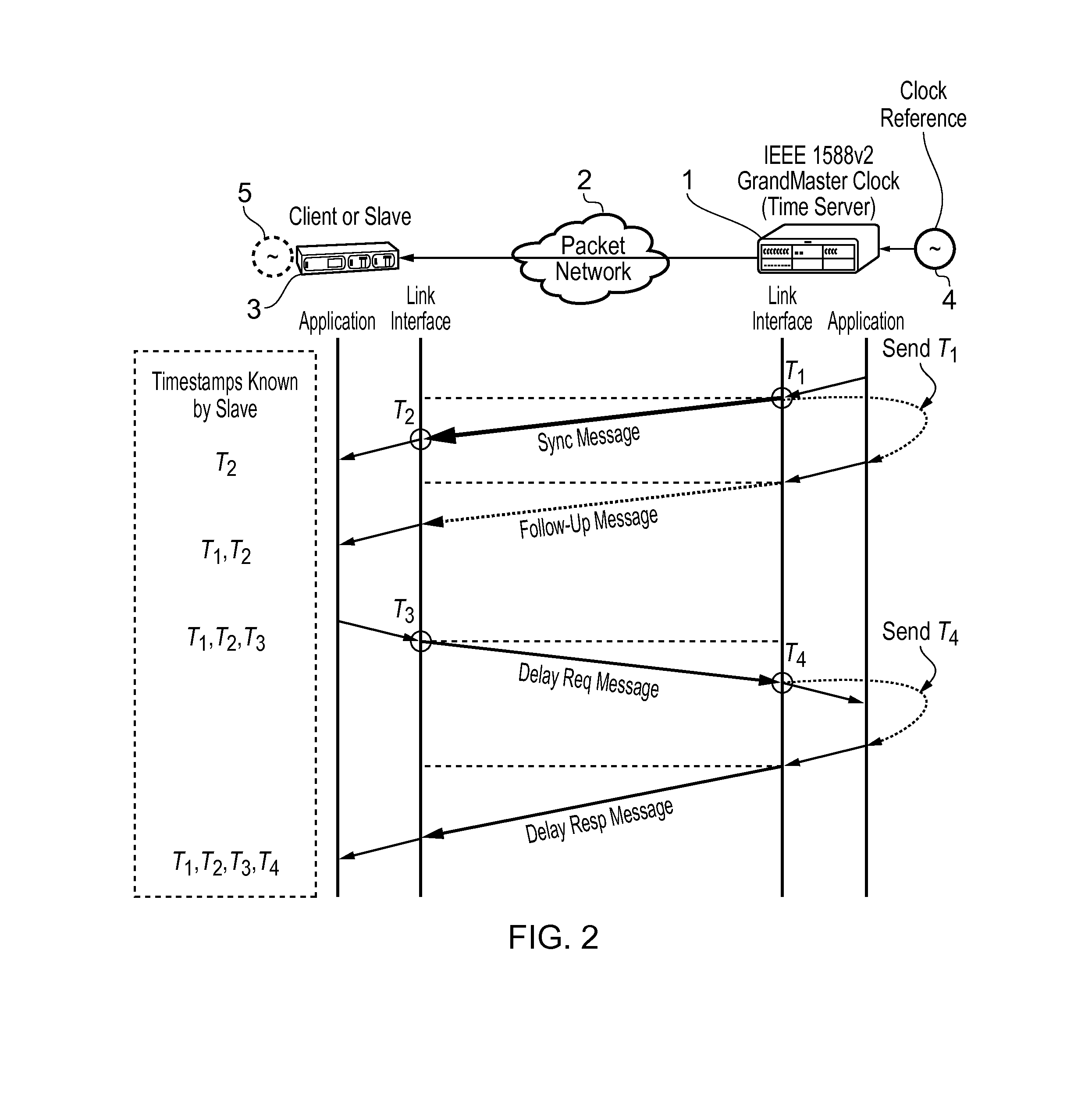Method and devices for frequency distribution
- Summary
- Abstract
- Description
- Claims
- Application Information
AI Technical Summary
Benefits of technology
Problems solved by technology
Method used
Image
Examples
Embodiment Construction
[0130]Accordingly, at their broadest, methods of the present invention provide for synchronising the frequency of an oscillator in a slave device to the frequency of a master clock in a master device by taking account of delay variations to messages between them.
[0131]A first aspect of the present invention provides a method of synchronising the frequency of an oscillator in a slave device to the frequency of a master clock in a master device, the method including the steps of:
[0132]a) receiving in the slave device a first message from said master device having a first time-stamp which is a time-stamp of said master clock indicating the precise time of sending of said first message and a first correction value which is the cumulative delay encountered by the message during its passage from the master device to the slave device;
[0133]b) extracting said time-stamp and said correction value from said first message and recording a first value of a counter in the slave device at the time...
PUM
 Login to View More
Login to View More Abstract
Description
Claims
Application Information
 Login to View More
Login to View More - R&D
- Intellectual Property
- Life Sciences
- Materials
- Tech Scout
- Unparalleled Data Quality
- Higher Quality Content
- 60% Fewer Hallucinations
Browse by: Latest US Patents, China's latest patents, Technical Efficacy Thesaurus, Application Domain, Technology Topic, Popular Technical Reports.
© 2025 PatSnap. All rights reserved.Legal|Privacy policy|Modern Slavery Act Transparency Statement|Sitemap|About US| Contact US: help@patsnap.com



